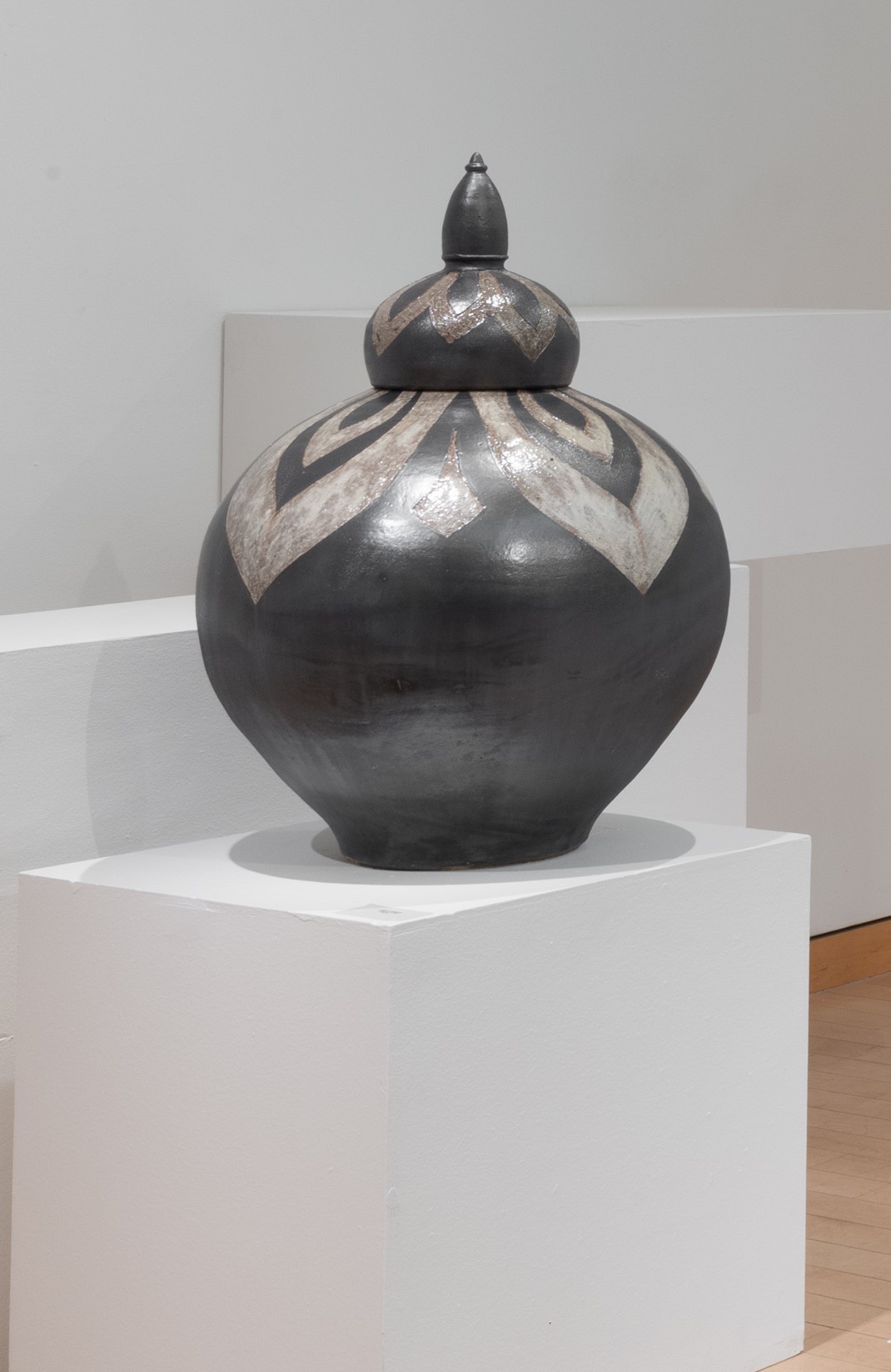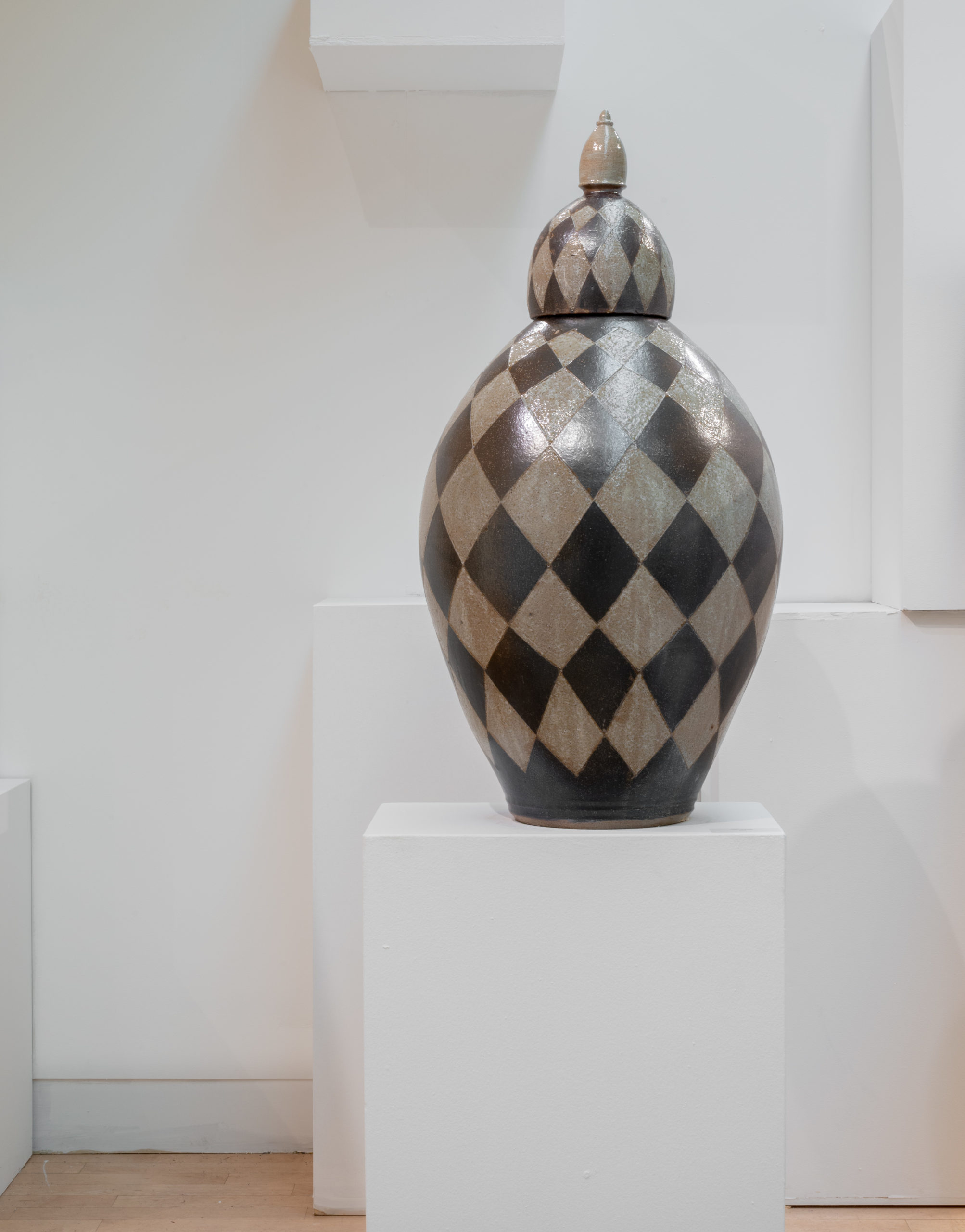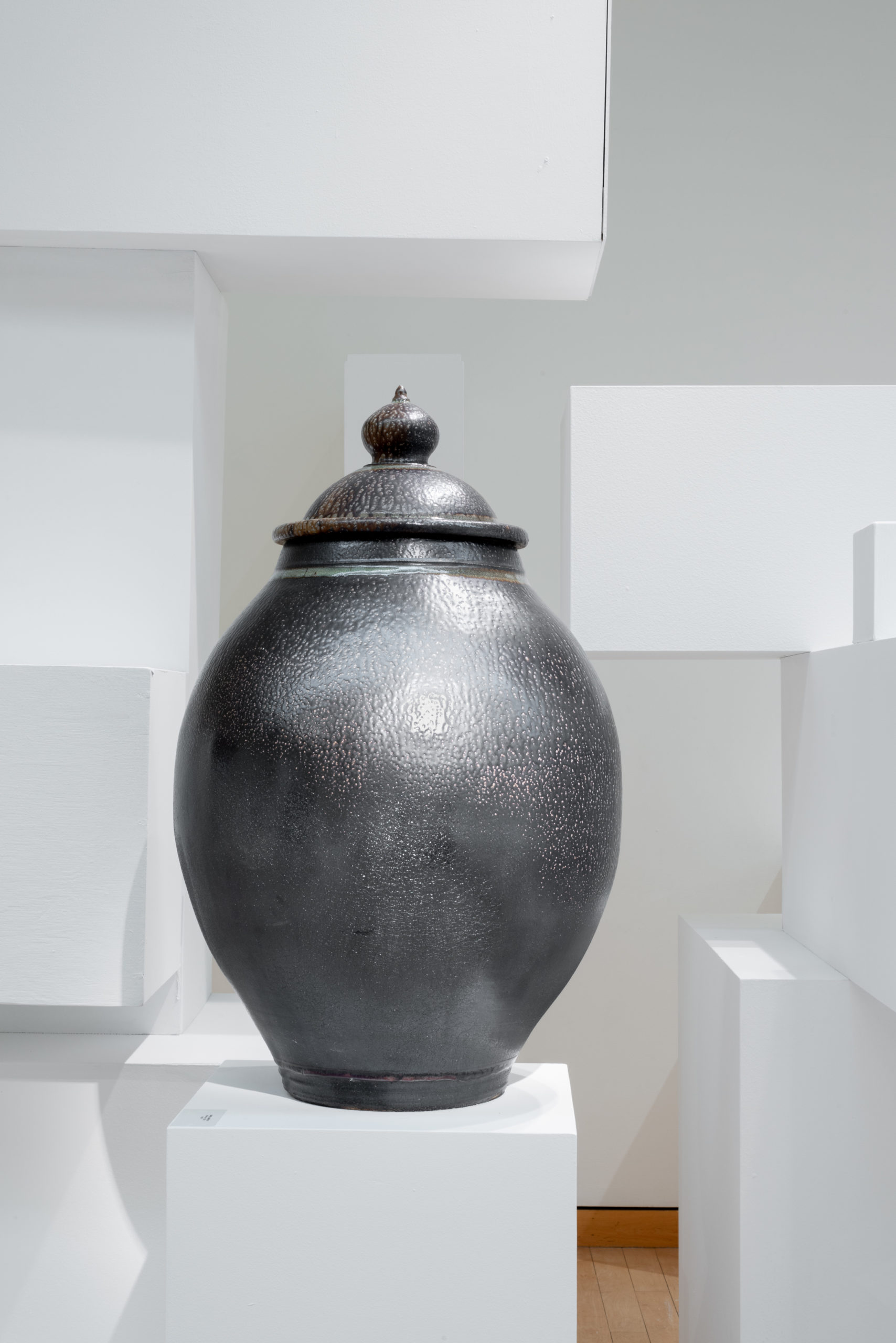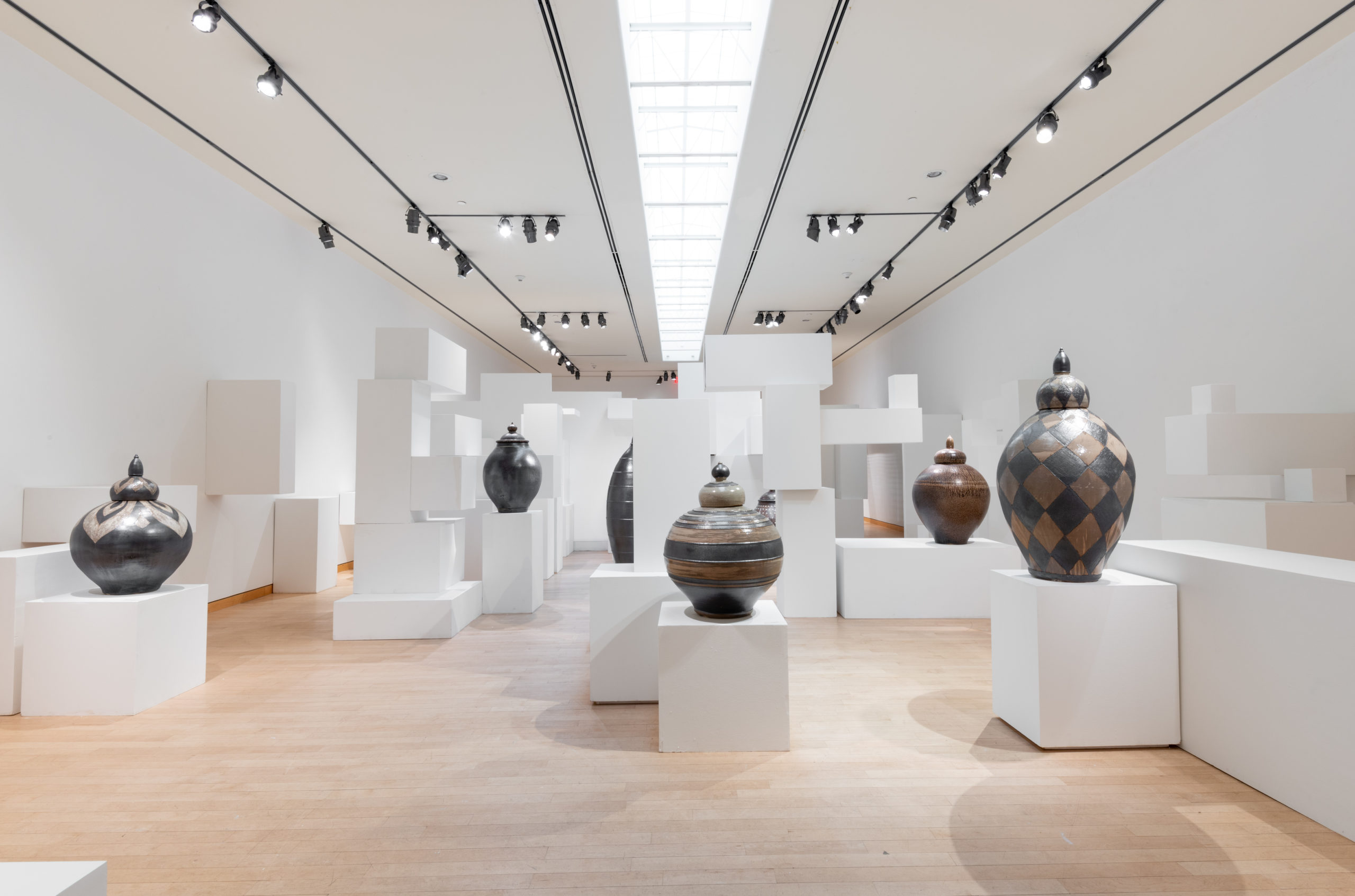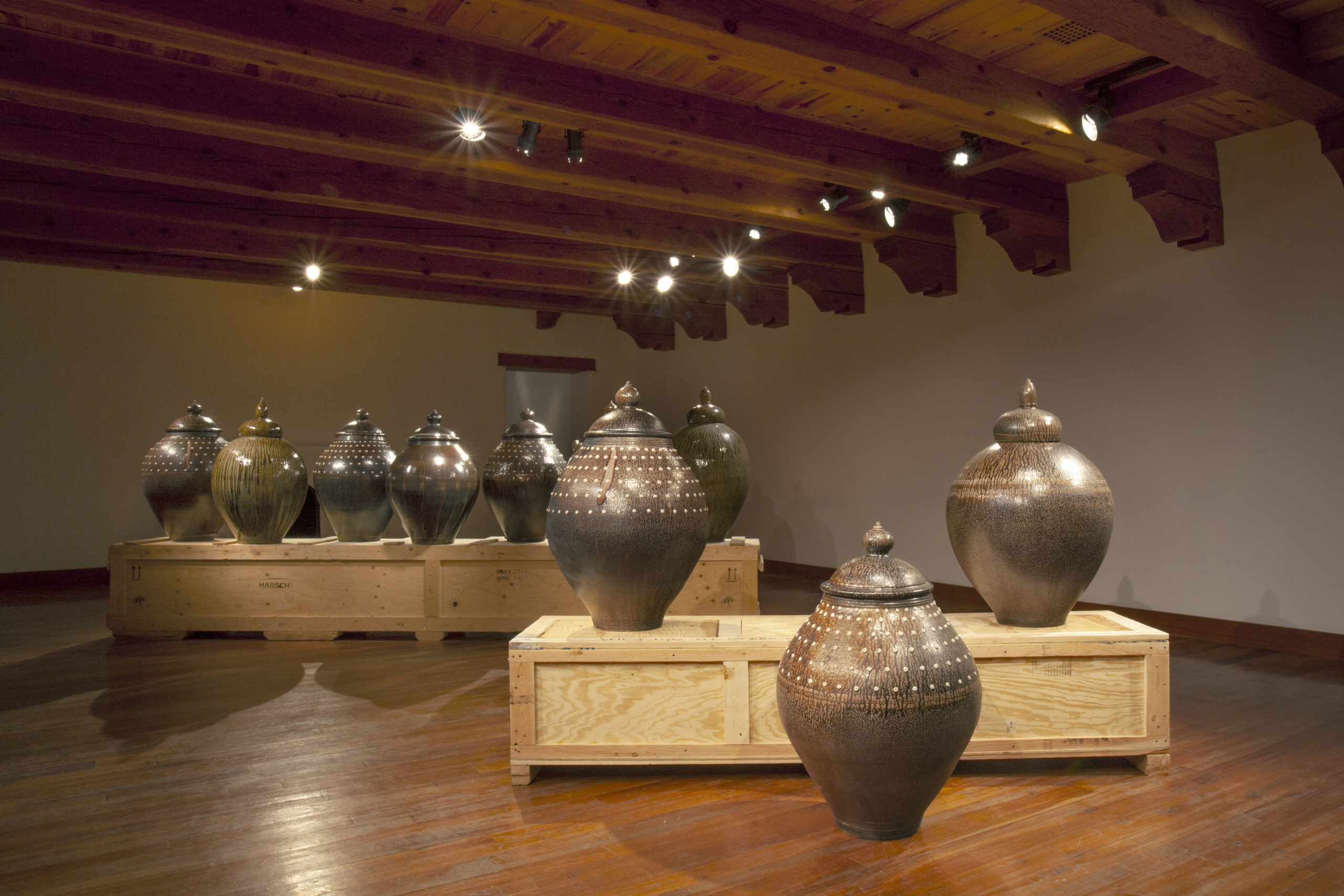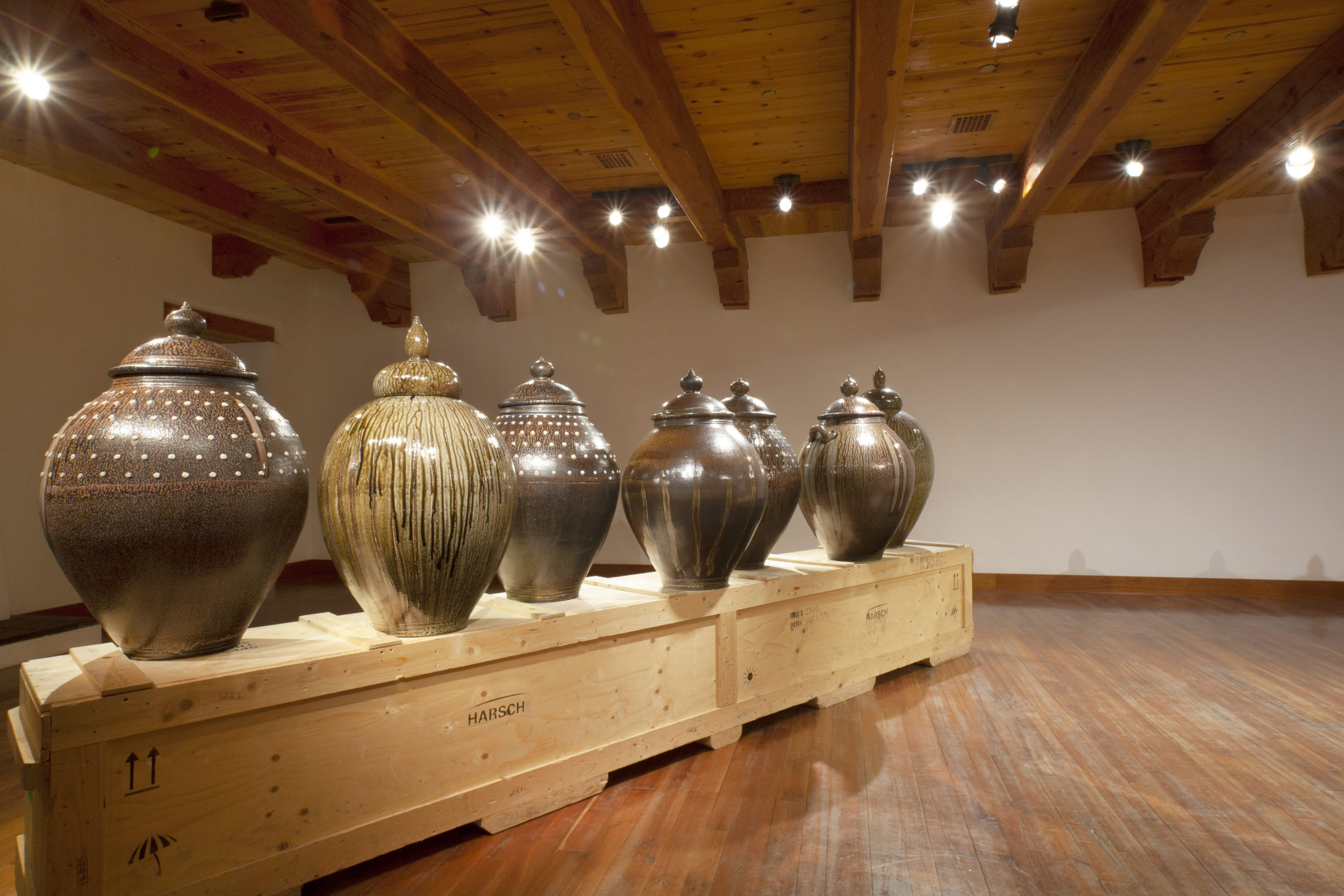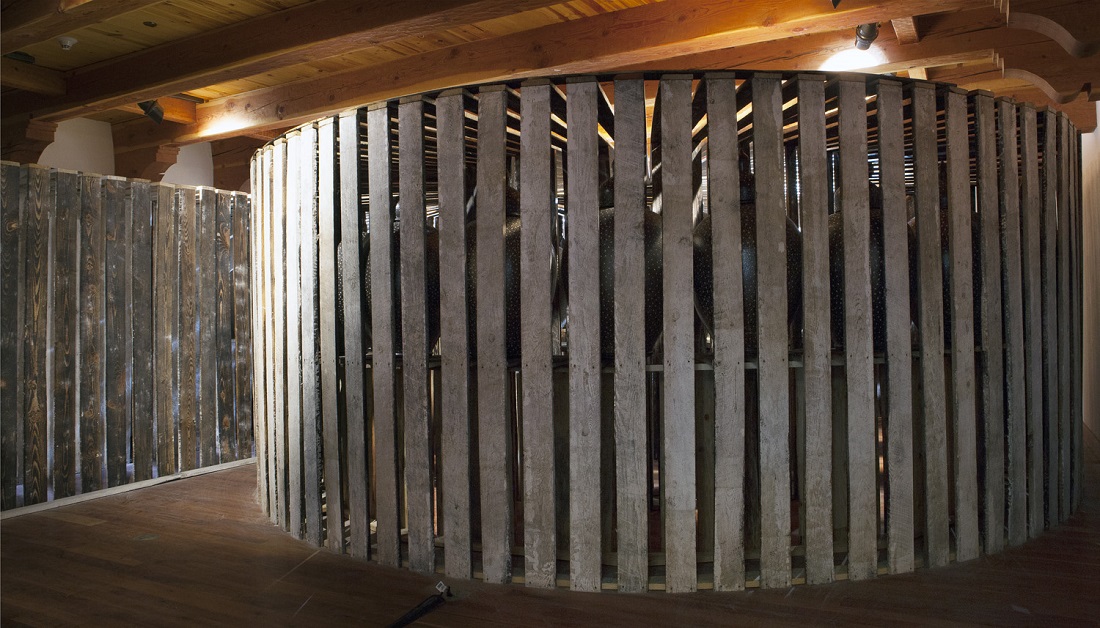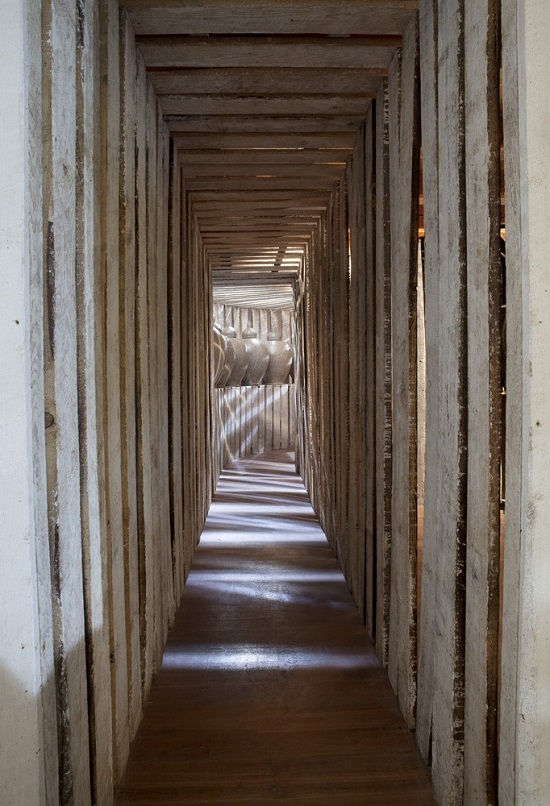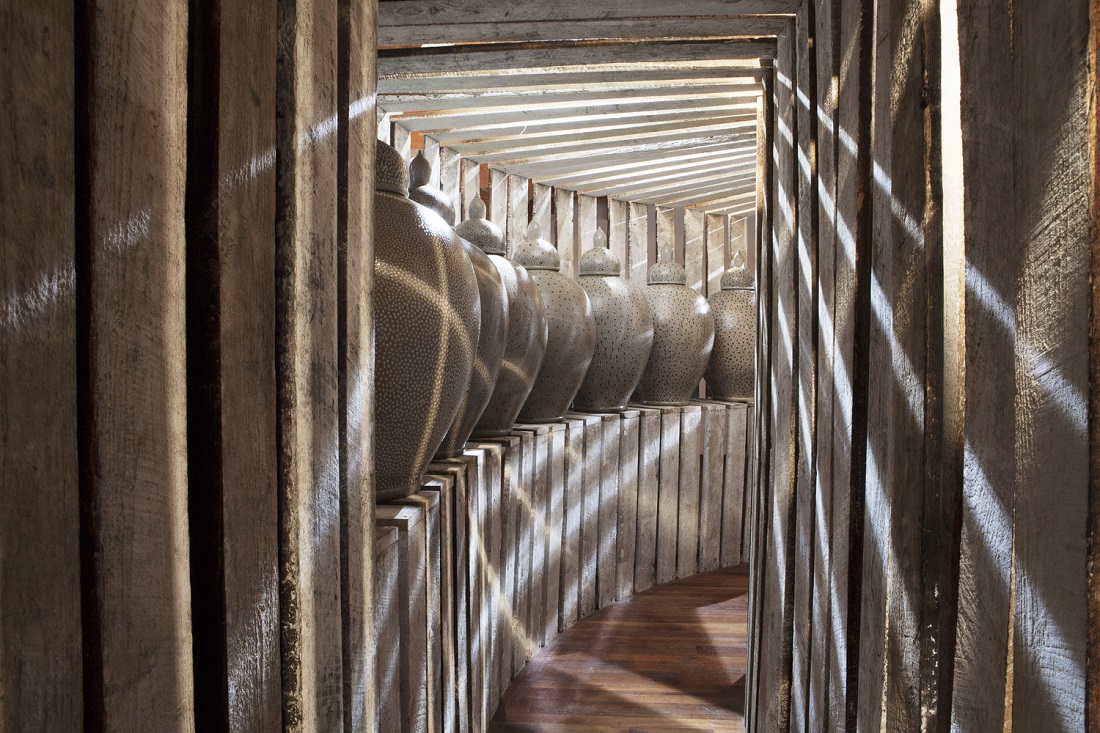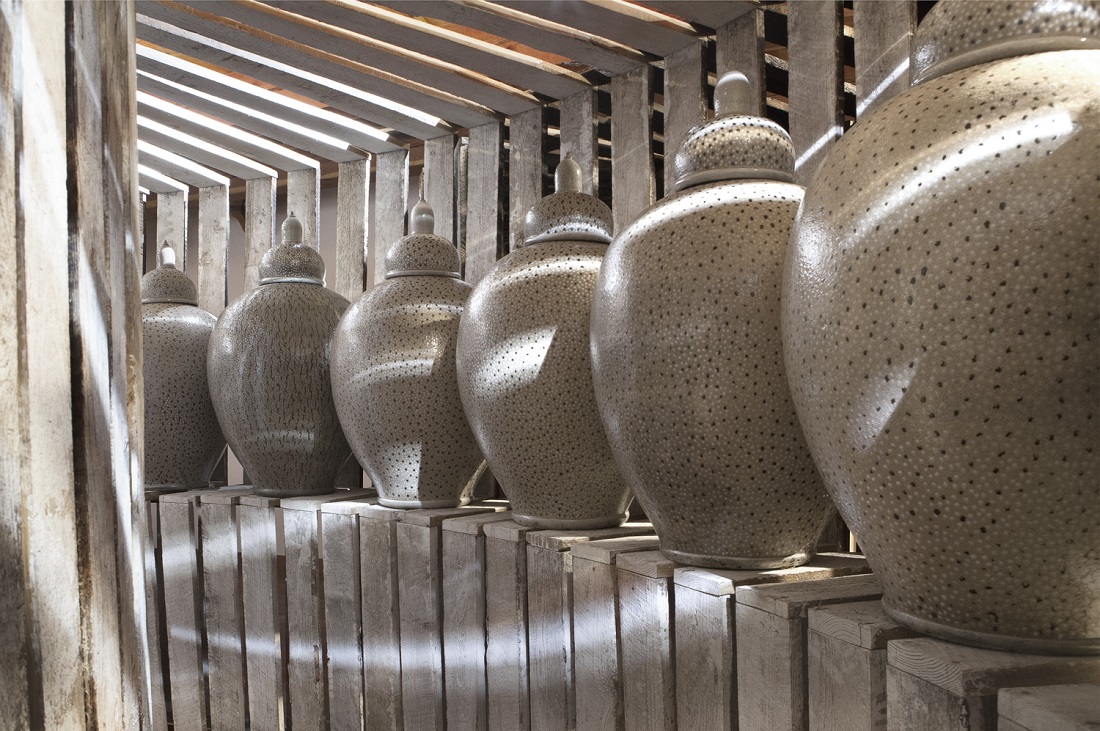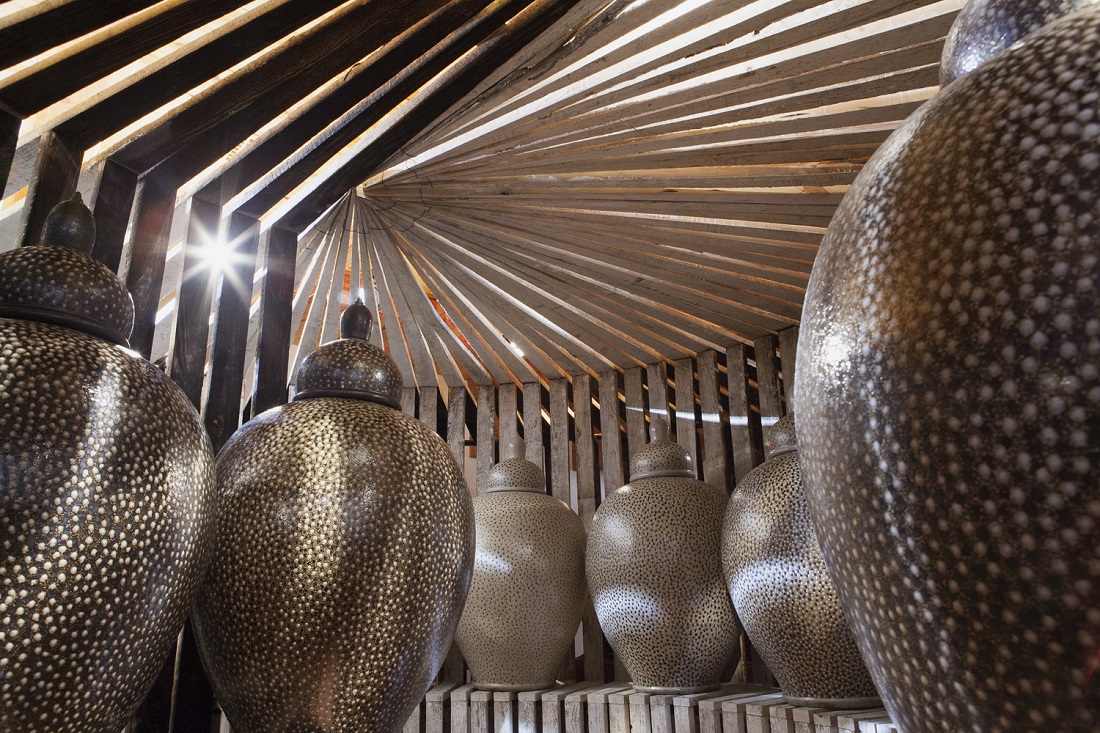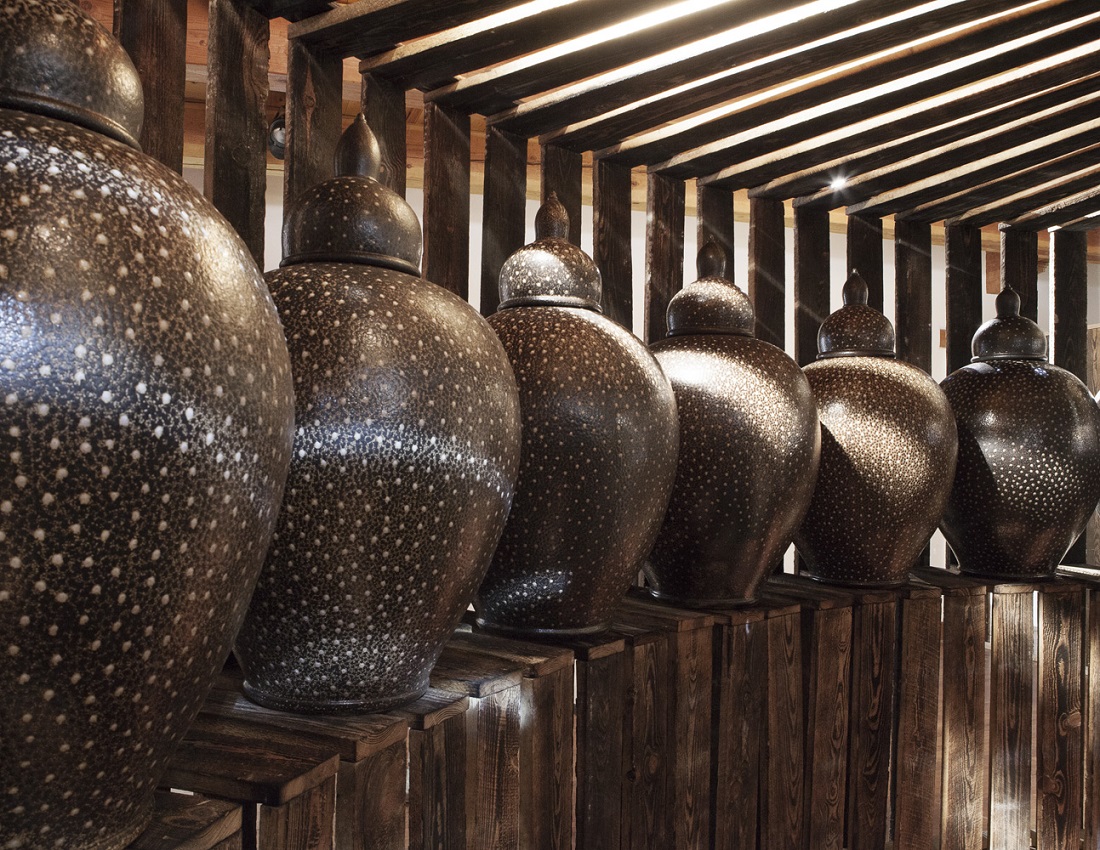Daniel Johnston is the leading exponent of North Carolina’s pottery tradition and simultaneously one of that state’s most contemporary and cerebral artists. His debut on the national art scene in 2014 with the intention that he could “make pots that reflect the culture and times in which I live,” was swiftly followed with three critically-acclaimed installations, sold out exhibitions and accessions by museums.
With modest beginnings in Randolph County, North Carolina, and little formal education, Johnston began apprenticing in nearby Seagrove, North Carolina, at the age of 16, learning directly from generations of American potters in the country’s oldest pottery mecca.
“This unconventional and diverse apprenticeship provided me with the skills and the perspective to return to North Carolina and pursue my craft on a conceptual level. I have mastered a level of craftsmanship that has left me disillusioned with the merits of displaying skill for its own sake. By making archetypical forms that transcend their historical function, these works point outward towards larger ideas about architecture and the role it plays in our perceptions of security and permanence.”
Working in this vein, Johnston places his large jars in wooden structures that reference the vernacular architecture of the American South. The resulting architectural spaces acknowledge the historic contexts of vessel-making traditions and reflect Johnston’s evolving ideas about how vessels function symbolically, economically and culturally.
Johnston states, “This work does not abandon my roots or pedigree, but embraces it without falling into the trap of nostalgia. The structures I make have as much to do with this sense of security as with the vulnerability of the actual impermanence of architecture and our own existence. Putting my ceramic vessels in a temporary architectural space is much like placing them in the houses we live in, surrounding the permanence of the human spirit with an ephemeral structure. I am always seeking ways to collapse my own criterial definitions between Art and Craft, to be able to operate in the realm of both, but without the psychological restrictions of these labels.”




